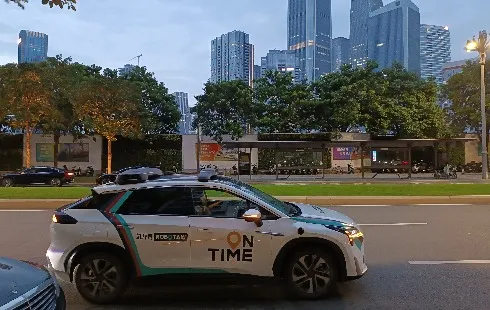
Oktoberfest in the news: How people around see beer's birthday
Section: Arts
FFP2 masks are used in healthcare sectors where there is an increased risk of infection. Designed as a single-use product, FFP2 masks must be disposed of after use to avoid further risk of infection. When FFP2 masks are used for private use (e.g. shopping), a lower pathogen load of FFP2 masks can be expected. FFP2 masks offer better protection than medical face masks (surgical masks) when used correctly. However, their availability is limited. Therefore, the reuse of FFP2 masks for private use can be a useful addition.
Exposure to bacteria and viruses such as SARS-CoV-2 is an important consideration when reusing masks. Each wearer leaves pathogens from their own nasal, throat and skin flora in the mask. These cannot be completely deactivated with simple procedures. Therefore, only personal reuse can be considered.
The information brochure of the Free University of Applied Sciences (FH) Münster shows the advantages and disadvantages of two alternatives for reducing possible SARS-CoV-2 pathogens: the "7 days drying with room air" method and the "80 °C dry heat" method.
Stability of SARS-CoV-2 on/in FFP 2 masks
The research has shown that SARS-CoV-2 remains infectious after more than an hour on and in FFP2 masks at 70 °C. Only at 80 °C dry heat is no infectious SARS-CoV-2 detectable after 60 minutes. In addition, the first investigations have shown that SARS-CoV-2 only decreases significantly in infectivity on the porous mask material after several days, even at room temperature.
Therefore, an FFP2 mask should not be worn on subsequent days.
Mask design and types
FFP2 masks are designed to fit close to the face at the edges. To adapt to the shape of the nose, a strap is fitted over the bridge of the nose, which must be moulded to the individual nose shape by the wearer. There is an important structural difference between masks with and without an exhalation valve. Masks without an exhalation valve filter both the inhaled and exhaled air. Masks with a valve only filter the inhaled air and offer little external protection because the exhaled air is not filtered.
Important note: The masks should not be placed or hung on/over the heater to dry. 30 °C to 40 °C are optimal growth conditions for many bacteria and fungi in moist masks.
Possibilities and limits of simple disinfection procedures for SARS-CoV-2 and other pathogens
The investigations have shown that SARS-CoV-2 can only be safely inactivated on and in the mask material at temperatures of 80°C and an exposure time of one hour. Pathogens of the nasal, pharyngeal and skin flora may still be present on the mask. Therefore, a mask that has already been used and heated may only be worn again by yourself. For the same person wearing the mask, these (own) germs are largely harmless compared to the (then inactivate) corona viruses. To kill all pathogens, a higher temperature would be necessary, but this can impair the filtering performance and stability of the mask. Especially dimensionally stable masks ("basket models") show external deformations above 90°C.
The temperature of 80 °C dry heat should therefore neither be exceeded nor fallen short of.
Correct disinfection procedure: 7 days drying in room air
SARS-CoV-2 is infectious on mask materials even at room temperature over a long period of time. Assuming that a reduction of more than 95% minimises the potential risk of infection to an acceptable level, FFP2 masks should not be worn again until the seventh day at the earliest.
The FFP2 masks should be taken off after wearing it without touching it at the front. Then the masks should be hanged on a hook or similar, to dry in a room (E.g. hallway, living room, office - not kitchen or bathroom because of humidity) for 7 days before it can be worn again on the eighth day. Each mask must be hung up individually to dry, which means that if there are several family members, the masks must be dried separately from each other and labelled according to wearer. You should only repeat this "drying cycle" five times. Dispose of the mask worn for the fifth time in the household waste. If you notice that a mask is defective, that you have been coughed on directly or that a mask is particularly worn, we advise you to dispose of it directly even before the five drying cycles have expired.
What are the limitations of other disinfection procedures?
Numerous reprocessing procedures for professional use are being discussed. For complete inactivation of all pathogens, much higher temperatures, steam/vacuum processes and/or the use of chemicals are required. These processes require an individual check of filter performance, material degradation and an examination of the inner filter layers for each product. This guide is intended for private use only; risks from chemicals etc. should be avoided.
Image by Nana Cola

Section: Arts

Section: Business

Section: Business

Section: Arts

Section: Health

Section: Arts

Section: News

Section: News

Section: Arts

Section: Business
Health Insurance in Germany is compulsory and sometimes complicated, not to mention expensive. As an expat, you are required to navigate this landscape within weeks of arriving, so check our FAQ on PKV. For our guide on resources and access to agents who can give you a competitive quote, try our PKV Cost comparison tool.
Germany is famous for its medical expertise and extensive number of hospitals and clinics. See this comprehensive directory of hospitals and clinics across the country, complete with links to their websites, addresses, contact info, and specializations/services.
One of the most beautiful squares transforms into a summer stage every year for two days. The Gärtnerplatz Open-Air features a free music and cultural program across three stages, as well as street food from local vendors. On Saturday, the main stage at Gärtnerplatz offers something for everyone,...



No comments yet. Be the first to comment!